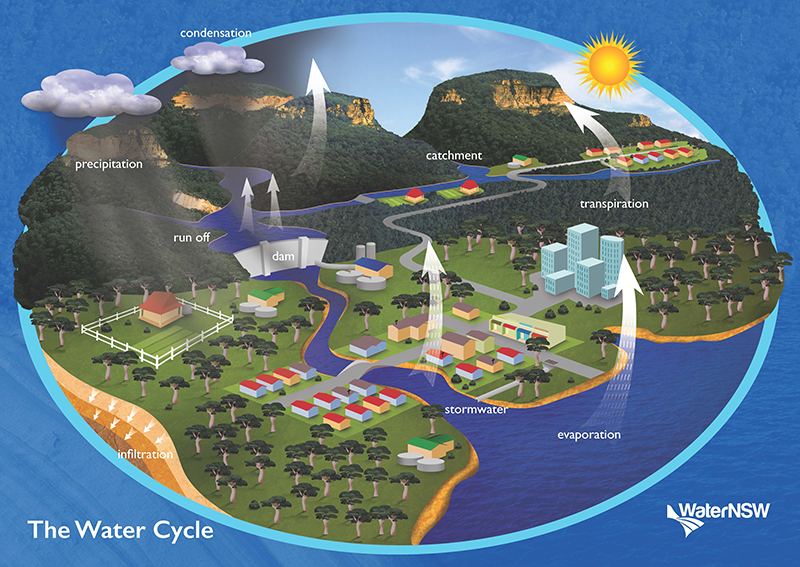The natural water cycle
Every drop of water on Earth already exists, captured in the ground, oceans, lakes, ice, snow and atmosphere. No new water enters the water cycle. Through the natural water cycle, water is used over and over again.
Did you know? Only 3% of the Earth's water is freshwater and this always remains the same as no new water is added to the water cycle.
What is the water cycle?
Powered by the sun, the cycle from rainfall to evaporation to rainfall is one of the largest physical processes on Earth. Water falls as rain, snow or sleet. It collects in ice, rivers, groundwater and the oceans.
When water evaporates from lakes and oceans, it leaves impurities behind. This means the water cycle naturally cleans the water and is how freshwater is created.
This purification process also occurs when plants transpire (breathe), and water evaporates through their leaves. These natural processes are what keeps the environment healthy.

WaterNSW acknowledges the traditional custodians of the lands and waters on which we work and pay our respects to all elders past, present and emerging. Learn more
